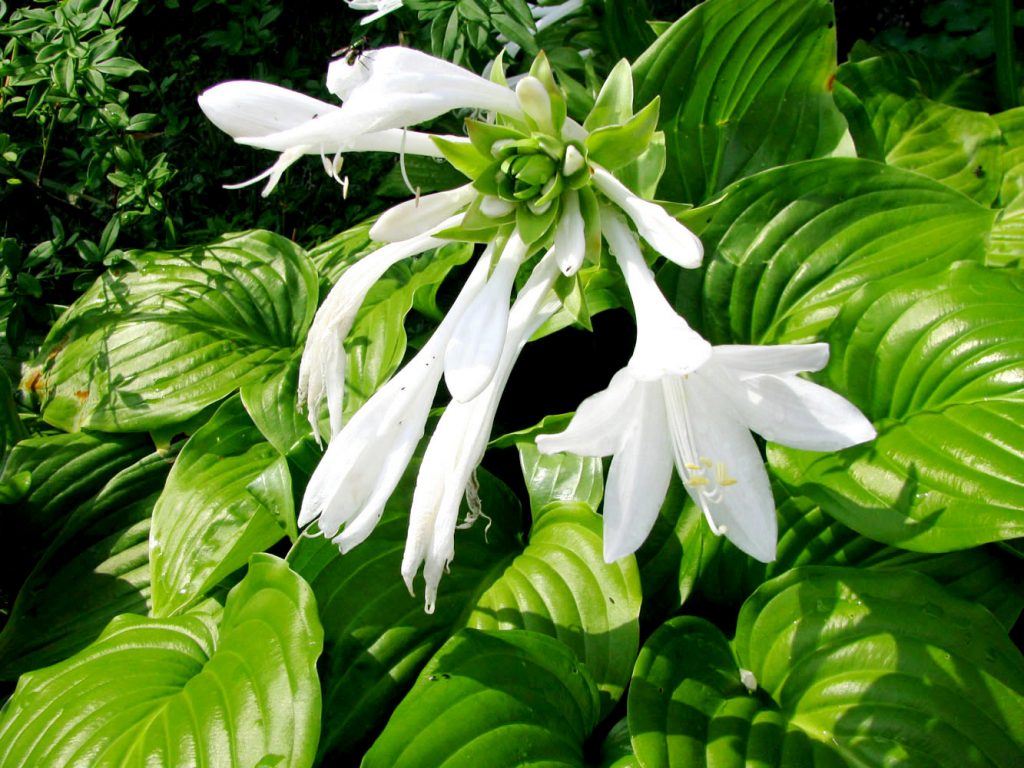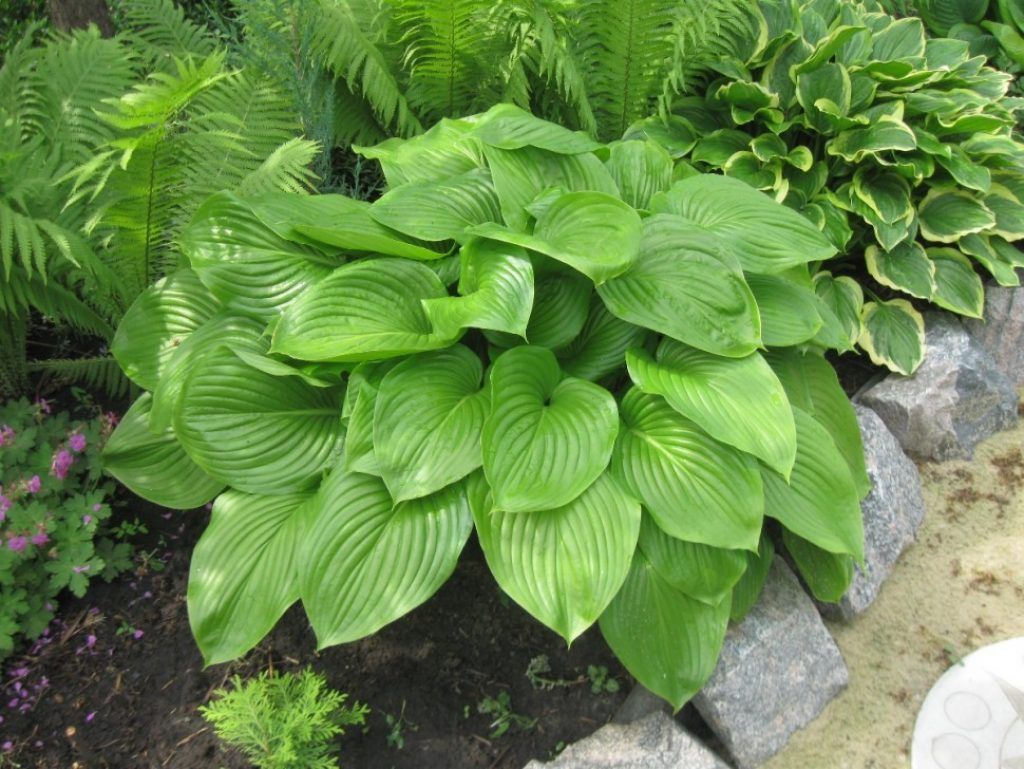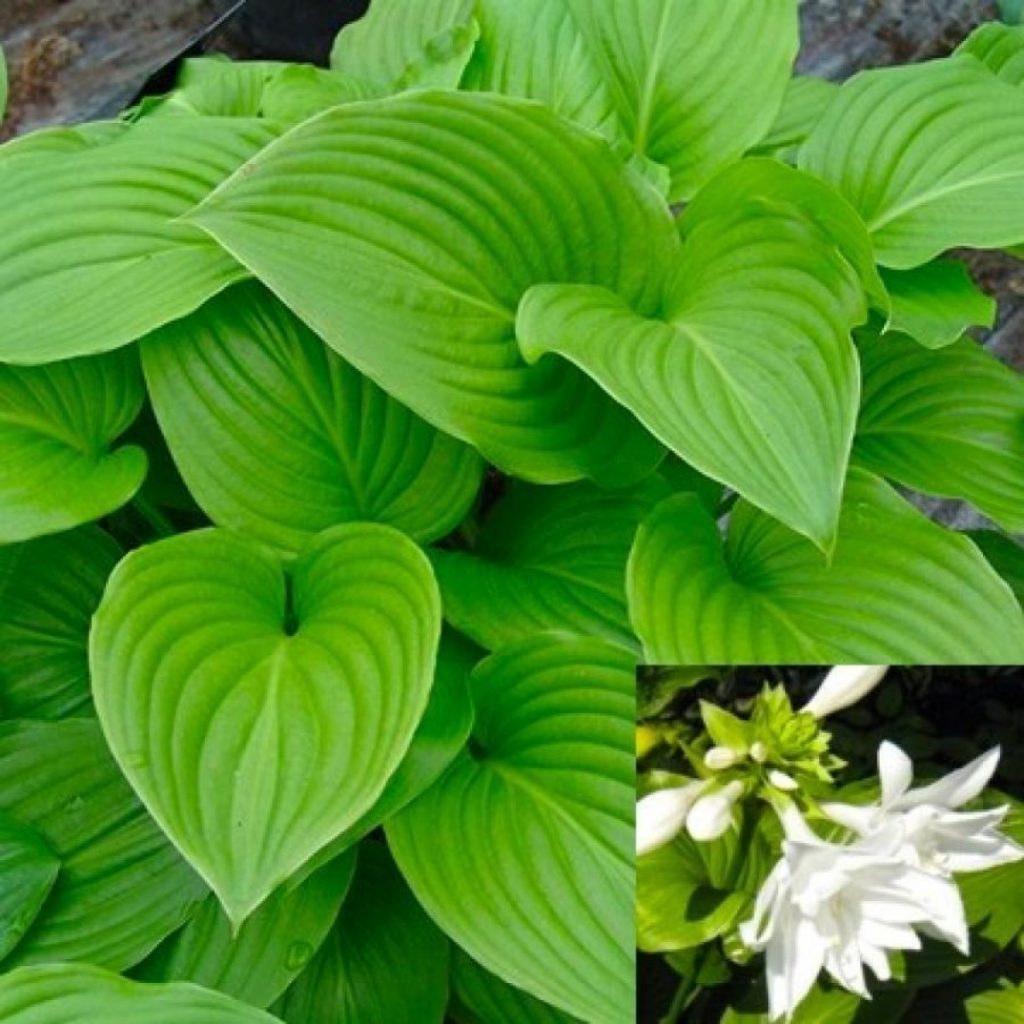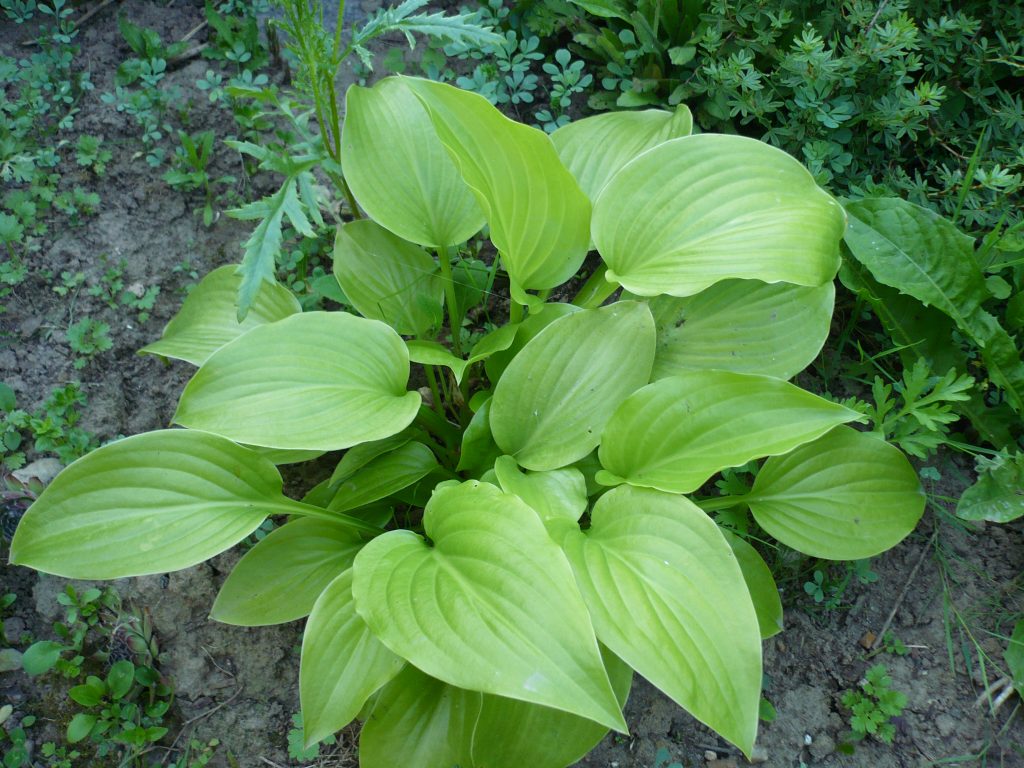Plantain hosta - growing rules
Khosta plantain is a representative of perennial herbaceous plants of the Asparagus family. Cultivated in Japan, China and the Far Eastern regions of Russia. The variety got its name due to the similarity of the aboveground part with the description of the plantain. It is used in gardening in landscape design as a decorative type with shade tolerance.

Hosta plantain photo
Botanical characteristic
Hosta plantaginea is an ornamental deciduous plant.
Description:
- height up to 0.5-0.7 m;
- the crown is wide, formed by many well-leafy shoots, forming a dense pillow;
- the shape of the foliage is elongated, oval, with pointed ends, length up to 30 cm, the color is classic green, the structure is thin, the surface is shiny, smooth, with 7-9 distinctly pronounced veins arranged in pairs, horizontal arrangement on long petioles, growth from a basal rosette;
- peduncles up to 0.5-1.0 m long, slightly leafy;
- the shape of the inflorescences is racemose, formed by tubular funnel-shaped flowers, up to 15 cm in diameter, the color is white, they have a delicate smell similar to the scent of lilies;
- fruits - triangular capsules with a leathery surface, seeds are flat, winged, black.
Flowering occurs in late summer and lasts until mid-autumn. The buds fully open at dusk.
Features and landing technology
In the natural environment, it prefers areas with high humidity, more often the shores of natural reservoirs (lakes, streams, rivers). It grows to a lesser extent in open forest glades and mountain slopes.

Khosta plantain
Timing
Plantain hosta can be planted in open ground in spring or autumn. Wherein:
- spring planting should be completed before the foliage blooms;
- the autumn planting must be planned after flowering and completed 2-3 weeks before the expected first frost, so that the bushes have time to take root in the new growing conditions before the cold weather arrives.
Site selection and preparatory work
Hosts have been growing without replanting for more than two decades in a row, so a permanent place is chosen immediately. The perennial, undemanding to the growing conditions, fully develops both in the area illuminated by the sun and in the shade and partial shade. Only subspecies with yellow and variegated leaves (variegated) need constant sunlight to maintain decorativeness, otherwise, without sufficient illumination, the foliage becomes completely classic green.
When grown in hot southern regions, it is better to give preference to planting in partial shade to prevent drying out of superficial roots.
The plantain variety grows equally well on any soil, but it acquires the greatest decorative appeal when planted in slightly acidic and acidic loamy soils with good air permeability and moisture absorption.
Selection and preparation of planting material
Cuttings left after pruning or cuttings cut from an adult plant are suitable as planting material. When planting the bushes purchased in the store, they are initially removed from the shipping container, shaking off the remnants of the soil mixture, and lowered for 2-3 hours into the water, where the root former is added.

Plantain hosta
Technology
For a perennial prone to intensive growth, when planning planting, it is required to observe the minimum permissible distance - from 0.3 to 0.6 m.
Technology description:
- the planting hole is dug in accordance with the area of the root system;
- the bottom is laid out with a mixture of rotted manure, peat, river sand and leafy earth;
- an earthen hill is formed in the central part, the plant is set in the center, spreading the roots and sprinkled with soil, leaving the growth buds at the level of the soil surface;
- after planting, the host is watered;
- the base is mulched with sawdust, coniferous bark or a peat mixture, which helps to avoid excessive evaporation of moisture.
Care rules
For an undemanding perennial crop, minimal care is organized, including watering, feeding and pruning. When grown in regions with cold winters, additional shelter is required.

Hosta plantain photo description
Watering
Depending on weather conditions, perennials are watered as the soil dries out. Only newly planted bushes are brought in water for the first week twice a day, avoiding falling on the foliage.
Top dressing
The fertilizers introduced into the pit at the stage of planting are enough for the host for the next two growing seasons. Further, the culture is fed every three years:
- in the spring, liquid mineral dressings with an increased nitrogen content are introduced for intensive growth of the vegetative mass;
- in the fall, the proportion of nitrogen-containing complexes is reduced, replacing them with potassium and phosphorus ones, which improve the general condition of the plant before cold weather and increase frost resistance.
Pruning
The host bush does not need to be formed. Only damaged leaves and shoots, as well as dried flower stalks, are subject to pruning.
Pre-winter preparation
The flower culture has good frost resistance, however, when planting in unfavorable climatic regions, insulation for the winter is required. This is caused by the superficial location of the root system.
The greatest problem when growing hosts is winter soaking and subsequent freezing of the main point of growth. Plants over six years old are at risk.
As a root cover, a mulch made from coniferous spruce branches or a peat mixture, laid out in a layer of 5 cm, is suitable. You can replace the mulch with a covering material - agrofibre or polyethylene.
Reproduction methods
Hosts are propagated, incl. and plantain, in several ways: by seeds, cuttings and dividing an adult bush.

Hosta plantain photo
Seed reproduction
With the seed method of propagation, the development of plants is much slower in comparison with hosts obtained by cuttings or from a divided mother bush. Such flowers reach full decorativeness with flowering only in the fourth or fifth year. The seeds are sown directly into the open ground after the final establishment of warm weather and the warming up of the earth to 15 ° C, or they are pre-germinated in pots.
Cuttings
Propagation by cuttings is recommended in late spring - early summer. Shoots cut from the heel - part of the bark are suitable for blanks. Most often, the shoots left after the spring pruning of the bush are used for reproduction. They are rooted in high humidity conditions.
Dividing the bush
The main, often used method of cultivating a flower culture, because gives quick results and retains the ability to bloom for the next season.
An adult bush from three years old is taken for division.Divide it in the spring, in April-May, or in the fall, at the end of August-September, planting the cuttings as independent plants.
Treatment and prevention of diseases and pests
With proper care, hosts rarely suffer from infectious diseases and pests. Caterpillars and slugs, which are harvested by hand, are dangerous for perennials. In case of mass defeat, spraying with insecticides is used.
In order to prevent the appearance of harmful insects that eat up the foliage and reduce the decorative effect of the flower, the root rosette is mulched with sawdust or ash.
To prevent the development of infectious diseases, fungicidal treatments are used. For this flower culture, a specific disease of viral etiology is dangerous - the host virus, which for a long period proceeds in a latent form, and then covers the leaves with spots and leads to its death. There is no effective treatment for this infection, therefore the best way to protect healthy bushes from infection is to remove a sick perennial.
Application in landscape design
The hosta plantain variety is widely used in landscape design for decorating garden beds, ridges and borders, creating alpine slides. It is planted for the purpose of landscaping the territory on personal plots and for landscaping in the city limits and in park areas.

Hosta plantain planting and care
The flower culture fits well into the group composition, but the largest specimens often act as tapeworms - they are planted singly. Pandora hosta is combined with dwarf conifers, astilbe, ferns and daylilies.
Gardeners reviews
Gardeners often use the plantain hosta because of its shade tolerance and decorativeness when decorating personal plots. The unpretentious perennial adapts well to the urban environment and serves as a means of landscaping courtyards and parks. It is planted in the shade, partial shade, as well as in areas open to the sun.

